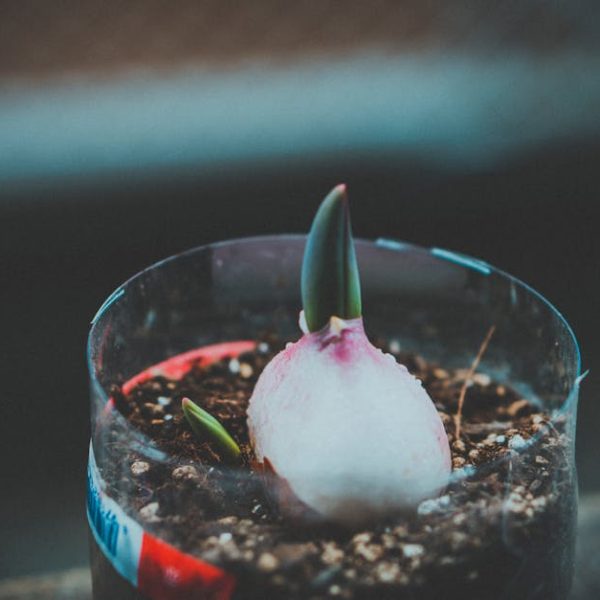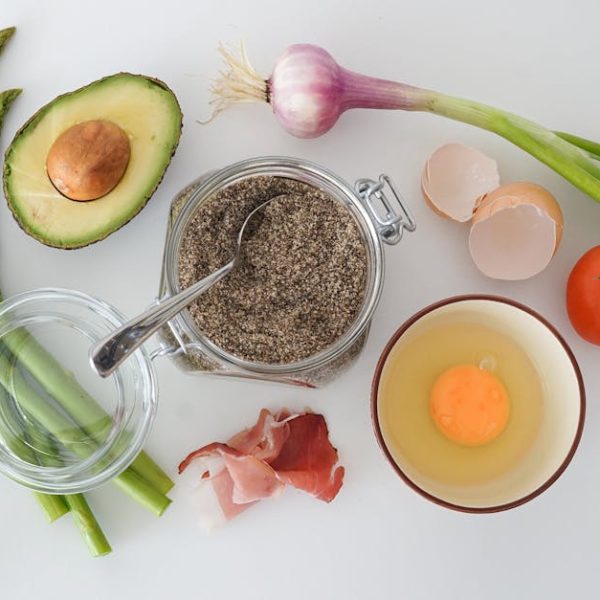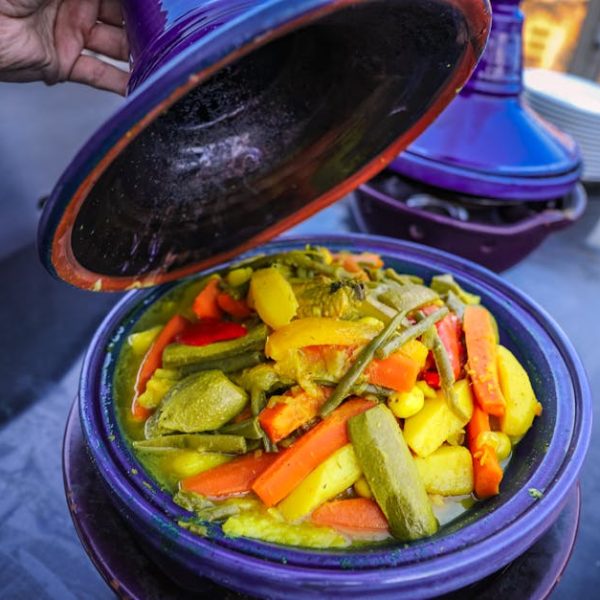You’ve been there — standing in the grocery aisle, staring blankly at the shelf, unsure if the recipe you’re trying to whip together calls for chives or green onions. The similarities between these two beloved herbal ingredients make it understandably challenging to differentiate them. However, while they might appear alike and are often used interchangeably, chives and green onions boast distinct characteristics that diversely affect their flavor, nutritional profile, and culinary applications. In this article, we will dissect their variances to end your herb confusion once and for all.
Background and Overview of Chives and Green Onions
Quite like the lilies you admire in your garden, both chives and green onions are, surprisingly, members of the Allium genus, a family of flowering plants. Chives, scientifically known as Allium schoenoprasum, are a perennial plant native to Europe, Asia, and North America. They are famous for their slender, tube-like leaves and gentle taste, offering subtle hints of garlic.
On the contrary, Green onions, also known as scallions or spring onions, trace back their roots to Asia. Identified by botanists as Allium fistulosum, these allium spices are favoured for their white base that transcends into hollow, dark-green leaves and their milder-tasting profile, compared to regular onions.
- Chives: Chibbles, Schnittlauch
- Green onions: Spring onions, Scallions, Salad onions
| Attributes | Chives | Green Onions |
|---|---|---|
| Color | Light Green | White base transitioning to Dark green top |
| Length | 10-12 inches | 12-15 inches |
| Thickness | Thin | Thick |
Nutritional Profile Comparison between Chives and Green Onions
Not only do these herbs carry poignant flavors, but they also host a healthy dose of nutrients. Chives remain a high-quality source of vitamin A and K, and they carry an exceptional count of folate and choline, aiding memory and muscle control.
On the other side of the culinary duel, green onions pack a powerful punch of vitamin K and C. These nutrient dynamos are also rich in copper, which aids cardiovascular health. But which one invests in the better nutrition dividends? Here’s a closer look:
| Nutrient | Chives (per 100g) | Green Onions (per 100g) |
|---|---|---|
| Calories | 30 | 32 |
| Protein | 3.3g | 1.8g |
| Vitamin K | 212.7mcg | 207mcg |
| Vitamin C | 58.1mg | 18.8mg |
With this newfound clarity over the subtle yet significant disparities between chives and green onions, you can now confidently add the right herb to garnish your dishes or add that extra zing. Whether it’s the mild, garlic-hinted aura of chives or the distinct crunch of green onions, you’re in command of your cooking expeditions.
The Flavor Profile Differences between Chives and Green Onions
Let’s talk flavor, an integral aspect that guides our selection of one ingredient over another. Chives are undeniably mild with a somewhat garlicky flavor that slightly resembles the taste of its cousin — the onion, however, is far gentler and sophisticated. These delicate strands impart a subtle savory touch without overpowering the harmony of other ingredients.
Meanwhile, green onions exhibit a two-toned flavor palette. The white part provides a sharp, pungent flavor analogous to common onions, albeit milder, while the green part manifests a slightly biting note, adding a fresh zing to assemble the complexity of flavors.
Pro-Tip: When concocting your culinary masterpieces, remember that chives are so delicate that heat can easily dissipate their flavor. Use them as a garnishing agent or add them near the end of your cooking process. On the other hand, green onions can withstand longer cooking times, making them suitable for stir-fries and other cooked dishes. In raw dishes or salads, use either of them, depending on the flavor intensity you desire.
Usage and Application in Cooking for Chives and Green Onions
Using these herbs strategically can serve as a game-changer in your culinary freestyle. Chives often find their place as garnish over soups and salads or sprinkled over cream cheese. They also add a fresh, aesthetic touch to sauces, dips, and baked potatoes.
Green onions, with their robust texture and tangy flavor, are commonly championed in Asian cuisine, in stir-fries, dipping sauces, soups, and noodle dishes. Their diversified usage also extends to raw dishes, salads, and marinades, injecting a peppy energy into these preparations.
⭐ Best Practices:
- Storage: To store these herbs, wrap them in a damp paper towel and stash inside a loosely closed plastic bag in the vegetable compartment of your fridge. They’ll stay fresh for up to a week.
- Cleaning: Rinse these herbs under cold running water and gently shake off the excess. Pat dry using a paper towel or a salad spinner. Ensure they’re thoroughly dry to avoid any spoilage.
Health Benefits and Possible Concerns for Chives and Green Onions
Both chives and green onions confer numerous health benefits, but their specific advantages differ. Chives are high in antioxidants, reducing the risk of chronic diseases, and boast antibacterial properties. Additionally, their vitamin K content is beneficial for maintaining bone health.
Green onions, on the other hand, are nutrient powerhouses promoting overall health. They’re known for their heart health benefits, thanks to their anthocyanins, and for boosting the immune system due to their high Vitamin C content.
However, be mindful when consuming these herbs, especially if you’re prone to allergies, as they’re part of the Allium family, which can cause allergic reactions in some people.
Pros
- Rich in vitamins and minerals
- Low in calories and fat
- High in antioxidants
Cons
- Potential allergenic properties
Now, equipped with the knowledge to differentiate between chives and green onions, you can navigate the dynamic culinary world with renewed confidence. These herbs, with their unique flavors and nutritional profiles, are worthy additions to your kitchen repertoire. Happy cooking!
Key Takeaway:
- Chives and green onions, both belonging to the same Allium genus, have distinct characteristics affecting their flavor, nutritional profile, and culinary applications.
- Chives are mild in flavor offering hints of garlic, whereas green onions offer a mild onion-like taste.
- In terms of nutrition, chives offer significant amounts of vitamin A and K, with green onions packing in considerable amounts of vitamin K and C.
- Culinary applications differ, with chives commonly used as a garnishing agent and green onions used more in cooking.
- Both herbs offer a range of health benefits, but individuals with allergies should consume with caution.
Don’t worry about confusing these two versatile herbs next time. With your newfound understanding of their unique characteristics, you’re ready to navigate your kitchen and produce culinary delights more confidently. These precious insights will help you utilize chives and green onions optimally, adding that perfect dash of taste, texture, and nutrition to your meals.
FAQs
Q: Can I substitute chives for green onions in my recipes?
A: While both belong to the onion family, their taste profiles are different, with chives offering a milder flavor. You can substitute one for the other, but it may alter the flavor of your recipe.
Q: What are some common dishes where I can use chives and green onions?
A: Chives are excellent in salads, soups, sauces or as garnishes, while green onions are commonly used in stir-fries, soups, and noodle dishes. They can also be used in raw dishes.
Q: How should I store chives and green onions for maximum freshness?
A: Keeping them wrapped in a slightly damp paper towel, inside a loosely closed plastic bag in the vegetable compartment of your fridge will keep them fresh for a week.
Q: Are there any potential health concerns when consuming chives or green onions?
A: As both belong to the Allium family, there could be potential allergic reactions in some individuals. If you are prone to food allergies, it’s always best to consume these herbs in moderation.
Q: Which herb should I use – chives or green onions – for a more robust flavor?
A: If you want a stronger flavor, go for green onions as they offer a more pronounced taste compared to the subtle, mild flavor of chives.
In the end, don’t forget to share this insightful article with fellow food enthusiasts and explore more such posts on our website!






